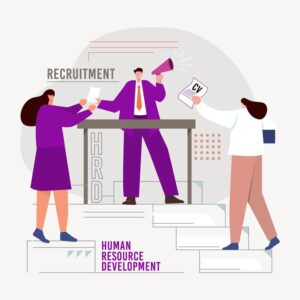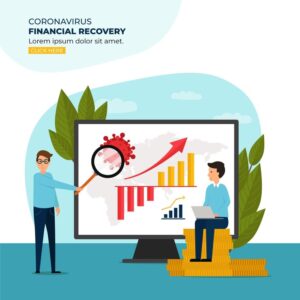
Andy, a recent graduate, joined our team with a spark that caught our attention. Eager to learn, he showcased excellent communication skills and creativity in presentations. However, as time passed, it became apparent that Andy struggled with timely execution, often placing blame on new team members for delays and inefficiencies.
As his manager, the choices would be to:
- Ignore Shortcomings: Some managers might choose to turn a blind eye to Andy’s shortcomings, focusing solely on the positive aspects of his performance.
- Provide Feedback and Targets: A proactive approach involves giving constructive feedback, setting specific targets for improvement, and providing support until ownership is built in his work. If improvement doesn’t occur, further steps might be considered, such as suggesting he leaves the role or exploring opportunities in other teams.
- Re-align Responsibilities: Another option is to re-align Andy’s responsibilities, shifting towards more strategic activities that leverage his strengths in thinking and creativity.
Human Resources Perspective:

As an HR professional, it is our job to equip the Manager to make the right choice in a manner that aligns with both individual growth and organizational objectives.
- Establishing Alignment: Managers need to align talent with the strategic objectives of the organization. This involves open conversations with employees to understand their aspirations and map them to the organization’s goals. If execution is a key need for the success in this organization, then Andy needs to buckle up.
- Long-Term Employee Growth: Employee growth should be viewed from a long-term perspective. Focusing solely on weaknesses can demotivate individuals. Providing a holistic perspective on the importance of various skills, including execution, can inspire employees to work on their shortcomings. The silver lining- Managers need to be encouraged to look at the positives of every employee.
- Understanding Team Dynamics: Team dynamics play a pivotal role, especially with high-visibility employees like Andy. Managerial decisions can shape the team’s behavior and future dynamics. HR professionals should guide managers to consider the broader impact of their choices on team morale and anxiety.
- Supporting Managers: HR’s role is to support functional managers in navigating challenging situations. By offering guidance, facilitating communication, and providing resources for skill development, HR contributes to the creation of a positive work culture.
The Andy dilemma is not unique, and managers often find themselves at crossroads when dealing with contrasting strengths and weaknesses in team members. HR professionals play a crucial role in ensuring that decisions align with both individual development and organizational goals. By fostering open communication, encouraging a long-term perspective on growth, and understanding team dynamics, HR contributes to building a positive work culture that promotes continuous improvement and development.
Navigating Performance Management Setbacks

In the journey of a young HR professional, setbacks can be valuable lessons that shape not only individual growth but also organizational practices. This post recounts a pivotal experience where an Outstanding-rated employee faced the unexpected challenge of being put on a Performance Improvement Plan (PIP). The aftermath of this incident prompted a re-evaluation and reinforcement of the entire performance management system.
The Setback:
As the COE/SME of performance management for my unit, I found myself in the midst of a challenging situation. An employee, initially rated Outstanding, was placed on a Performance Improvement Plan. The shock and disbelief in the room during the ensuing meeting with functional stakeholders was my first experience of such kind.
The Organizational Response:

Post this incident, the organization embarked on a mission to fortify the discipline around each step of the performance management process. The lessons I learned led during that exercise, enables me to bring to you a set of recommendations:
- Consistent Communication: Regular and clear communication around the organization’s PMS philosophy, process, and policy should be disseminated to all employees. This ensures transparency and understanding of the expectations.
- Define Desired Performance Levels: The target-setting process should explicitly define the desired performance level for each rating, minimizing ambiguity and aligning expectations.
- Feedback Throughout the Year: Regular feedback and developmental inputs should be provided to employees throughout the year, fostering a culture of continuous improvement.
- People Manager Orientation: Conduct orientation and development interventions for people managers to ensure they are equipped to conduct fair and accurate assessments.
- Document Performance Evaluations: Performance evaluations should be thoroughly documented, providing a comprehensive record of an employee’s contributions and areas for improvement.
- Dual Evaluation Process: Both the employee and the reporting manager should actively participate in the performance evaluation process, promoting a two-way dialogue.
- One-on-One Conversations: HR teams, whether HRBP or PMS COE, should engage in one-on-one conversations with functional heads regarding both the highest and lowest raters in the team.
- Thorough Evaluation Notes: HR teams should prepare detailed notes and reasoning for the highest raters. These notes should encompass stakeholder feedback, performance history, and key initiatives undertaken during the year.
- Review by HR Head: The HR Head should review the performance ratings before the calibration process, ensuring alignment with organizational objectives.
- Calibration Process: A calibration process should involve all functional stakeholders in a room, collectively discussing each case of the highest and lowest ratings, along with promotion cases.
- Leadership Sign-Off: The CEO or the Head of the Business should sign off on the ratings of the year, reinforcing the commitment to the integrity of the process.
The PMS process is not just a set of steps but a crucial factor in shaping the culture of an organization. This case study emphasizes the importance of diligence and consistency in performance management practices. Ensuring the effectiveness of this process is essential, as one misstep can potentially derail the organization’s efforts in attracting and retaining top talent. By implementing these recommendations, HR professionals can contribute to the creation of a robust and fair performance management system that aligns with organizational goals.
Learning from Mistakes: A Case Study on Employee Engagement Surveys

Early in my second year of corporate tenure, I found myself unintentionally causing a significant disruption in our Human Resources department’s employee engagement score. This case study reflects on a pivotal learning experience that shaped my understanding of the impact of employee engagement surveys on team dynamics.
The Setting:
Our team of 12 HR professionals was exceptionally well-bonded, guided by an outstanding Head of Department (HOD). To manage his span of control, the HOD introduced Senior Managers, including an external hire, altering our reporting structure. The team dynamics changed, and the new Senior Manager’s presence began to bother many of us.
The Misstep:
During the annual Gallup Q12 survey, I, along with the entire team, seized the opportunity to express our frustration with the new Senior Manager. Without thoroughly understanding the questions, I marked them all low, inadvertently dragging down our department’s overall score.
The Consequences:
The results were shocking. Despite being the closest-knit team, our Human Resources department had the lowest Gallup score in the entire business unit. Our friendships endured, but the shared sense of achievement was tarnished. The survey results questioned everything we had built together, and the whole business unit seemed to be laughing at us.
The Learning:

This experience taught me a critical lesson: using one platform to address unrelated issues is detrimental. A single misstep can mar the collaborative landscape that would otherwise have been a testament to teamwork.
Key Recommendations for Employee Engagement Surveys:
- Pre-Survey Communication: Conduct pre-survey communication sessions with teams to set expectations and clarify the purpose of the survey.
- Shared Meaning Alignment: Discuss and align on the shared meaning of survey questions. Define terms to ensure a common understanding among team members.
- Results Explanation: Clearly explain what happens with the survey results, emphasizing that it is a tool for improvement, not a platform for venting frustrations.
- Regular Feedback Opportunities: Provide regular opportunities for employees to share concerns and feedback with HR and managers, preventing the survey from becoming a venting outlet.
- Results Sharing: Transparently share survey results with teams, fostering open communication and trust.
- Action Plan Creation: Collaboratively create action plans based on survey feedback, ensuring that employees feel heard and involved in the improvement process.
- Action Plan Implementation: Implement the action plans diligently, demonstrating a commitment to positive change.
- Status Updates: Regularly share the status of action plans with teams, keeping them informed and engaged in the improvement journey.
- Follow-Up Discussions: Conduct follow-up discussions in smaller groups to understand if there are additional concerns or improvements needed.
This case underscores the significance of thoughtful engagement with employee engagement surveys. The experience highlighted the need for strategic communication, shared understanding of survey questions, and a robust action plan to address concerns. As HR professionals, it is crucial to approach surveys not as mere data collection tools but as catalysts for positive change within the organization.
CEO Appraisal Dilemma: A Case Study on Aligning Principles and Stakeholder Needs

Embarking on a performance management implementation project with a new client is an exciting yet challenging endeavour. Here’s my experience where a seemingly smooth project took an unexpected turn during discussions on the CEO’s appraisal process.
The Challenge:
As an HR professional leading the performance management system (PMS) implementation, I encountered a setback when discussing the steps of the CEO’s appraisal process. The CEO expressed a strong reluctance to involve the Board in his assessment, citing a belief that they lacked a deep understanding of his day-to-day responsibilities. Instead, he insisted on having his direct reports evaluate his performance.
Identifying Gaps in the Approach:
Recognizing the major gaps in this approach, particularly from an experienced HR perspective, became imperative:
- a) The Board, responsible for setting organizational goals, should be involved in the CEO’s appraisal process.
- b) Mixing the appraisal and feedback processes by involving direct reports creates potential bias.
- c) Direct reports’ assessments, typically done by the CEO, may result in inaccurate evaluations.
- d) The PMS philosophy should be consistent for all participants, including the CEO, aligning with agreed-upon steps.
Navigating Intense Conversations:
What followed were intense conversations between the CEO and me. Despite his adamant stance against sharing his assessment with the Board, I, as an HR consultant, was firm in my belief that the Board’s involvement was crucial for a comprehensive CEO appraisal.
Leveraging Communication and Stakeholder Management:

In navigating these stressful days, my communication and stakeholder management skills were put to the test. I communicated the importance of aligning the CEO’s appraisal with organizational goals and principles. While risking the possibility of losing the client, I maintained a commitment to HR ethics and principles.
Finding Middle Ground:
After extensive discussions, the CEO agreed to share his assessment with the Board. To address concerns about feedback accuracy, we also decided to conduct a 360-degree feedback process to gather developmental inputs.
Signing Contract Extension:
Three months after the challenging phase, I signed an extension of my contract with the CEO, marking the resolution of the dispute. This experience offered valuable insights and learnings for both parties involved.
Key Learnings:
- Solid Foundation in HR Concepts: Upholding HR ethics and principles is crucial, even if it means potential financial implications.
- Understanding Stakeholder Needs: Recognizing and addressing stakeholders’ needs while maintaining a solid ethical base is key to successful project outcomes.
- Leveraging Soft Skills: Soft skills, including effective communication and stakeholder management, play a pivotal role in navigating challenging conversations.
- Role Playing Tough Conversations: Preparing for tough conversations through role-playing helps in being well-equipped for the actual interactions.
- Mentor Consultation: Seeking perspectives from mentors provides valuable insights and alternative viewpoints that may not have been considered.
Conclusion:
This example will give you an understanding how complex the implementation of performance management systems can get for HR professionals. By staying true to HR principles, understanding stakeholder needs, and leveraging effective communication and soft skills, HR professionals can navigate challenges and contribute to successful project outcomes.
